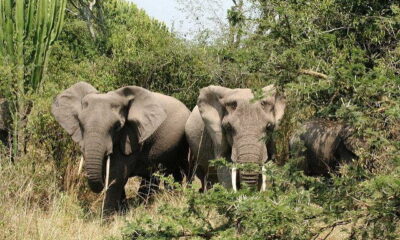

Economy
Greenpeace applauds Apple’s renewable energy commitment in China, urges competitors to follow
Apple has launched new clean energy programs in China to promote low-carbon manufacturing and green growth. They are now generating clean energy for 100% of its operations in China. The two new programs are aimed at reducing the carbon footprint of its manufacturing partners in China.
The programs will avoid over 20 million metric tons of greenhouse gas pollution in the country between now and 2020, equivalent to taking nearly 4 million passenger vehicles off the road for one year.
Apple also announced that construction on 40 megawatts of solar projects in the Sichuan Province is now complete. These solar installations produce more than the total amount of electricity used by Apple’s offices and retail stores in China, making Apple’s operations carbon neutral in China.
“Climate change is one of the great challenges of our time, and the time for action is now,” said Tim Cook, Apple’s CEO. “The transition to a new green economy requires innovation, ambition and purpose. We believe passionately in leaving the world better than we found it and hope that many other suppliers, partners and other companies join us in this important effort.”
The positive announcement coincides with a China Labor Watch report released today that argues Chinese factories that are producing Apple’s iPhone 6s are guilty of ongoing labour abuses.
In response to Apple’s announcement that it will work with its partners in China to push to use renewable energy for the manufacturing of Apple products, Greenpeace USA Senior IT Sector Analyst, Gary Cook said: “We need governments and companies to transition us to renewable energy as rapidly as possible, and Apple’s announcement today is a major step forward in building a renewably powered supply chain for its products. We have seen Apple lead the sector in building a renewably powered internet, and hope that Samsung, Microsoft, and other IT companies will follow their lead in manufacturing their cutting-edge devices with a 21st century energy supply.
“Apple now has the chance to secure its position as environmental leader by tackling the issue hazardous substances in products and manufacturing processes, as well as addressing the issue of electronic waste.”
Electronics manufacturing uses large amounts of energy in China and globally and is growing rapidly, estimated to be as much as 2% of total global electricity use by 2017. Much of the electronics manufacturing industry is based in China, which relies heavily on coal for electricity generation, underscoring the importance of shifting manufacturing toward renewable energy to reduce air pollution and carbon emissions.
The electronics sector should look beyond renewable energy, and address sustainability aspects of design through to recycling and extended use. On hazardous chemicals, Apple has been leading the sector by phasing out PVC from all products, however, Greenpeace urges the whole sector to remove other hazardous substances such as BFRs and benzene from both its product and supply chain.


 Environment10 months ago
Environment10 months agoAre Polymer Banknotes: an Eco-Friendly Trend or a Groundswell?

 Environment12 months ago
Environment12 months agoEco-Friendly Home Improvements: Top 7 Upgrades for 2025

 Features9 months ago
Features9 months agoEco-Friendly Cryptocurrencies: Sustainable Investment Choices

 Features11 months ago
Features11 months agoEco-Friendly Crypto Traders Must Find the Right Exchange





























